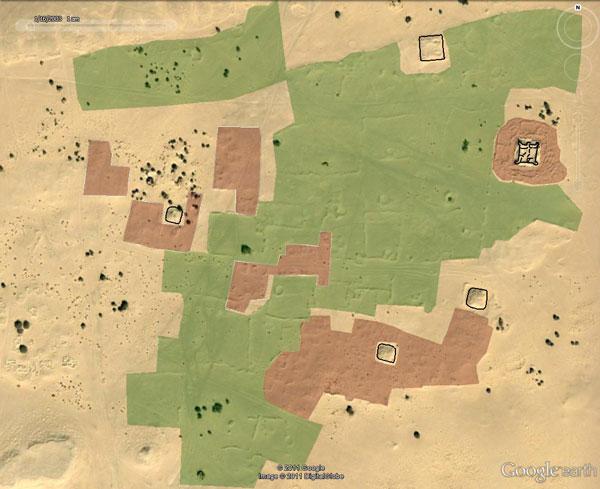Castles of 'Lost Cities' Revealed in Libyan Desert


New evidence of a lost civilization in an area of the Sahara in Libya has emerged from images taken by satellites.
Using satellites and air photographs to identify the remains in one of the most inhospitable parts of the desert, a team from the University of Leicester in England has discovered more than 100 fortified farms and villages with castle-like structures and several towns, most dating between AD 1 to 500.
"It is like someone coming to England and suddenly discovering all the medieval castles. These settlements had been unremarked and unrecorded under the Gadhafi regime," said project leader David Mattingly, professor of Roman archaeology at the university. The fall of the regime has opened up Libya to more exploration by archaeologists of its pre-Islamic heritage.
These "lost cities" were built by a little-known ancient civilization called the Garamantes, whose lifestyle and culture was far more advanced and historically significant than ancient sources had suggested. [Related: History's Most Overlooked Mysteries]
Castle-like complexes
The team from the University of Leicester has identified the mud brick remains of the castle-like complexes, with walls still standing up to 13 feet (4 meters) high, along with traces of dwellings, cairn cemeteries, associated field systems, wells and sophisticated irrigation systems. Follow-up ground surveys earlier this year confirmed the pre-Islamic date and remarkable preservation of the sites.
"Satellite imagery has given us the ability to cover a large region. The evidence suggests that the climate has not changed over the years and we can see that this inhospitable landscape with zero rainfall was once very densely built up and cultivated. These are quite exceptional ancient landscapes, both in terms of the range of features and the quality of preservation," said Martin Sterry, who has been responsible for much of the image analysis and site interpretation.
Get the world’s most fascinating discoveries delivered straight to your inbox.
The findings challenge a view dating back to Roman accounts that the Garamantes consisted of barbaric nomads and troublemakers on the edge of the Roman Empire.
"In fact, they were highly civilized, living in large-scale fortified settlements, predominantly as oasis farmers. It was an organized state with towns and villages, a written language and state of the art technologies. The Garamantes were pioneers in establishing oases and opening up trans-Saharan trade," Mattingly said.
Libyan heritage
The professor and his team were forced to evacuate Libya in February when the anti-Gadhafi revolt started, but hope to be able to return to the field as soon as security is fully restored. The Libyan antiquities department, badly neglected under Gadhafi, is closely involved in the project.
"It is a new start for Libya's antiquities service and a chance for the Libyan people to engage with their own long-suppressed history," Mattingly said. "These represent the first towns in Libya that weren't the colonial imposition of Mediterranean people such as the Greeks and Romans. The Garamantes should be central to what Libyan school children learn about their history and heritage."
The research is funded by the European Research Council, the Leverhulme Trust, the Society for Libyan Studies and the GeoEye Foundation.
This story was provided by OurAmazingPlanet, a sister site to LiveScience.




